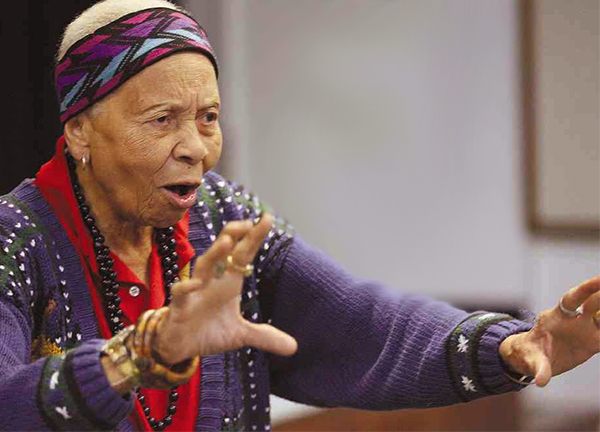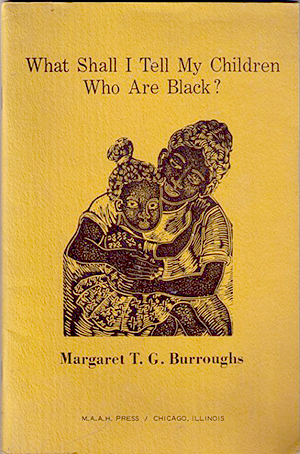Margaret Taylor-Burroughs moved to Chicago at the age of five and remained close to the city the rest of her life. She established a host of enduring cultural organizations, distinguished herself as an educator, served as a longtime commissioner at the Chicago Park District, and produced world-class bodies of literary and fine arts works. Burroughs attended public schools, culminating with her graduation from Englewood High School in 1933, before pursuing higher academic goals at Chicago Normal College, Chicago Teachers College and the Art Institute of Chicago, where she earned her B.E. and M.A. By the time she turned twenty-three in 1940, she had co-founded the South Side Community Arts Center (SSCAC), located across the street from the…
read moreMargaret Taylor-Burroughs moved to Chicago at the age of five and remained close to the city the rest of her life. She established a host of enduring cultural organizations, distinguished herself as an educator, served as a longtime commissioner at the Chicago Park District, and produced world-class bodies of literary and fine arts works.
Burroughs attended public schools, culminating with her graduation from Englewood High School in 1933, before pursuing higher academic goals at Chicago Normal College, Chicago Teachers College and the Art Institute of Chicago, where she earned her B.E. and M.A.
By the time she turned twenty-three in 1940, she had co-founded the South Side Community Arts Center (SSCAC), located across the street from the coach house she shared with her first husband, Bernard Goss, on 3831 S. Michigan Ave. She would serve on the board for 70 years. Burroughs also created a famous salon in Bronzeville, in which prominent cultural figures like W.E.B. DuBois and James Baldwin were among those in attendance. She launched an art fair at a shopping center around 35th Street and King Drive to provide a showcase for the work of black artists. She also helped start the National Conference of African-American Artists.
Burroughs crowning achievement, though, was the DuSable Museum, which she co-founded in 1961, along with husband Charles Burroughs, on the ground floor of her Chicago home; it remained there until it outgrew the space and was relocated to the current Washington Park site.
The museum is only not even two miles away from DuSable High School, where Burroughs taught from 1946-1969. She was also a professor of humanities at Kennedy-King College from 1968-79, and taught art and poetry to prison inmates.
Burroughs became heavily influenced by Mexican Muralists, whose style would later characterize her own famous white-on-black prints of African American history. Much like her art, her equally illustrious writing career was largely defined by its passionate interpretation of the African-American experience. Such poems as What Shall I Tell My Children Who Are Black!, and books like Jasper, Drummin’ Boy and Did You Feed My Cow? have all been critically acclaimed and translated into multiple languages.
Burroughs’ many honors include the President’s Humanitarian Award (given to her by Gerald Ford), the Paul Robeson Award, the Art Institute’s Legacy Awards, Anyone Can Fly Foundation’s Lifetime Achievement Award Winner, and she was named to the Chicago Defender’s list of most influential women.
read less









